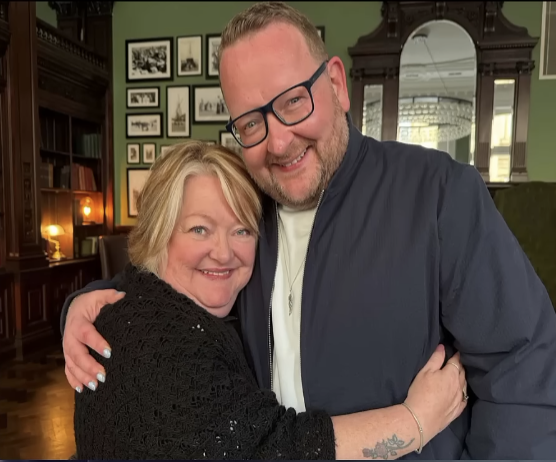
When Paula Cottrell was just 19, she faced an impossible decision. Young, alone, and struggling in Britain during a time when single mothers were often judged harshly, she made the heartbreaking choice to give her newborn son up for adoption. She held him once — just long enough to whisper a promise she’d never forget: “I’ll always love you.”
Life moved forward, but the ache never left her. Every birthday, every Christmas, every milestone she imagined — there was always a missing piece. She didn’t know his name, where he was, or what kind of man he’d become. But deep down, she carried the hope that one day, somehow, he’d find her.
Decades passed. Paula built a life — family, friends, a career — but never stopped wondering. “I used to dream about knocking on a door and seeing him standing there,” she said. “Even if it was just once, just to know he was okay.”
Then, 45 years later, a small plastic tube changed everything.
Her son, now a grown man, had taken a DNA test — not to find his birth mother, but to learn more about his ancestry. Yet when the results came in, there was a match. The name “Paula Cottrell” appeared under biological parent.
What followed were messages filled with tears, disbelief, and careful words bridging nearly half a century of separation. “I think you’re my mother,” he wrote. Paula read the message over and over before finally replying, her hands shaking.
A week later, they met.
When she saw him walk into the café — taller than she’d imagined, with the same kind eyes she remembered from that hospital room — her heart nearly stopped. He smiled, and the years melted away. They hugged, both crying, both trembling, both silently saying everything words couldn’t.
“He smelled like home,” Paula said later. “It was as if time folded in half.”
They spent hours talking — about his childhood, her life, the what-ifs and the maybes that filled the space between them. He told her about his adoptive parents, the good people who had raised him with love. And she told him she had never stopped thinking about him — not for a single day.
When asked how it felt, Paula said, “It’s like my heart finally came home.”
Their story has since inspired thousands. It’s a reminder of the enduring bond between a parent and a child — one that distance, time, or even fate itself can’t destroy. In an age where technology connects us in ways once thought impossible, DNA testing didn’t just reveal shared genes — it reconnected two souls who were always meant to find each other again.
Now, they talk every week, making up for lost years one conversation at a time. “We can’t get those 45 years back,” her son said, “but we have the rest of our lives to build new memories.”
And Paula smiles, her eyes shining with tears, whispering, “That’s all I ever wanted.”